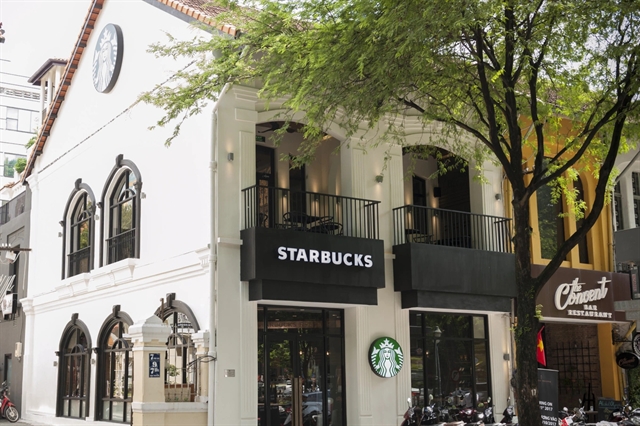The latest shutdown reduced the number of stores operating in the country to approximately 304,700, down four per cent year-on-year, according to a report published by the iPOS.vn platform, which specialises in researching the Vietnamese market.

A Starbucks Reserve store in HCM City's District 1 will close on August 26 after seven years of operation. — Photo courtesy of Starbucks
At least 30,000 food and beverage (F&B) stores nationwide closed in the first half of this year while new openings remained limited, a report has shown.
The latest shutdown reduced the number of stores operating across the country to approximately 304,700, down four per cent year-on-year, according to a report published by the iPOS.vn platform, which specialises in researching the Vietnamese food and drink market.
The report surveyed nearly 1,000 F&B business owners, more than 2,360 diners and 1,307 F&B employees in Vietnam, with various ages and occupations.
It revealed that HCM City experienced the most significant closures, with a six per cent decrease in the number of F&B stores in the period. In contrast, Hà Nội saw a slight increase of about 0.1 per cent.
The F&B industry witnessed strong fluctuations in H1, posing many challenges for the entire service industry, mekongasean.vn cited Director of iPOS.vn Vũ Thanh Hùng as saying.
There was also a noticeable rise in the number of stores with short lifespans (closing within less than three months of opening) in major cities, Hùng said.
Despite the decline in the number of stores, the industry’s total revenue exceeded VNĐ400 trillion (US$16 billion) in the six months, equivalent to 68 per cent of the total revenue in 2023.
The revenue uptick was attributable to the consumer price index which rose 4.08 per cent in H1 compared to last year's corresponding period and core inflation which increased 2.75 per cent, according to the report.
At the same time, the industry also recorded significant growth in the total number of transactions thanks to the fact that many stores launched promotional programmes to boost demand.
Notably, the challenging economic environment failed to significantly impact the frequency of dining out among Vietnamese consumers.
There was an increase of 4.1 per cent in the number of people eating out once or twice a week, while the number of people eating out three or four times a week remained the same compared to the same period last year.
In contrast, spending on cafes decreased sharply in the reviewed period. The proportion of people who spent over VNĐ100,000 per cup of coffee dropped from 6 per cent to 1.7 per cent. The mid-range price of VNĐ41,000 to VNĐ70,000 per cup became more popular with local customers.
The report outlined increased work pressure and current economic difficulties as the two main reasons consumers visit coffee shops less frequently.
According to the report, 41.7 per cent of respondents visited coffee shops only occasionally and 32.3 per cent went once or twice per week.
Hùng from iPOS.vn said that Vietnamese F&B businesses had shown incredible flexibility in quickly adjusting operations, cutting unnecessary costs and optimising cash flow.
At the same time, they had also developed new F&B products to bring new culinary experiences, attracting a large number of diners. — VNS
Read original article here